All About the Famous Portuguese Cork & How to Buy the Best
On our very first day in Lisbon, as we visited the cathedral near Alfama, my eyes caught a street vendor cart filled with beautiful light brown handbags with Portuguese tile designs. I walked over for a closer look and some locals explained that these were cork purses, cork handbags, cork shoes, and other Portuguese cork products.
Questions like what is Portugal famous for or what to buy in Portugal or where does cork come from, didn’t even cross my mind until after I saw several Porto and Lisbon street shopping sites and the ubiquitous cork products. Luckily, we met Carlos who know everything there is to know about cork in Portugal and the world. He was very generous with his time and shared many facts and stories about where cork is grown, how cork is harvested, how cork products are manufactured and a lot more. Not only that, he refused to take payment for the cork souvenir I wanted to buy. So, my new credit card wallet was a gift and Portuguese souvenir from Carlos.
Contents
- Why Cork Stories!?
- All about Cork Products in Portugal, a Conversation with the Expert
- How durable are cork wallets?
- What is cork made from?
- How are cork products made from the bark of a tree?
- Why is cork production so time consuming?
- How often can cork be harvested?
- How do cork plantations track harvest dates?
- How long does a cork oak tree live and yield cork?
- The long journey and lifecycle of cork
- How long have you had this cork store in Porto?
- Do you grow your own cork?
- Where does cork come from? Who grows cork trees?
- Why are Lisbon shopping streets filled with cork products?
- What’s the difference between real and fake cork products?
- Can you recycle wine bottle cork?
- Is cork production eco-friendly? Is cork industry sustainable?
- Cork the everlasting gift that keeps giving
- Tile Art and Cork Designs in Portugal
- What to Buy in Portugal
- Related Articles
- Pin for later
Why Cork Stories!?
After the initial surprise, we got so busy with sightseeing and didn’t pay attention to cork products in Lison. But, on our last day as we were walking to the Lisbon Santa Apolónia railway station to go to Porto, we passed by a short Lisbon shopping street on R. Jardim do Tabaco. I couldn’t resist getting a sling purse with traditional Portuguese designs before we left Lisbon. After all, it’s not always easy to find a Jain and vegan purse I like. In addition to cork purses, the vendors sold cork bottle caps, cork postcards, cork coasters, cork table mats, cork wallets and so much more.
By now you’re probably wondering why I’m writing about street shopping or cork products in Portugal. The reason is our chance encounter with a beautiful cork bike in the middle of the sidewalk in Porto and the fascinating conversation that followed.
As we looked around the mysterious bike, we saw a showroom for cork products of Portugal. The cork shop, a rather gorgeous showroom on the inside, had no sign on the very plain storefront. I wonder how people found them.
All about Cork Products in Portugal, a Conversation with the Expert
Intrigued by the store, we went inside, looked around and started talking with the young man behind the counter – Carlos Maia. As it turns out, his father owns a cork manufacturing company and the store. We learned a lot from him about the story of cork in Portugal.
Here are some of my questions and his explanations, in a Q&A format.
We were looking to buy a replacement wallet for Nirmal with a minimalistic design and we found one! But we were under the assumption that cork wallets would last a short time, so it would be a pointless waste. But just to be sure, I asked Carlos…
How durable are cork wallets?
Carlos: “Cork products are very durable! They are as durable as leather”, pulling out his wallet from his back pocket he continued, “I have been using this wallet for 4 years. It is still in perfect condition, except for taking on some blue color from my denim”.
We were totally surprised and even more curious. The wallet had aged beautifully, with a little fading of the red tile design and a little hue of blue, it looked amazing and felt soft like a well aged piece of leather.
What is cork made from?
Carlos: Cork is the outer bark of a tree. The tree is more commonly called the Cork Oak tree. He showed us a small and a huge sample of raw and boiled cork slabs.
How are cork products made from the bark of a tree?
Carlos: The process from bark to product takes months. With the proper processing techniques, cork products are as durable as leather.
- Once the bark is at the right age (about 9 years old), the bark from the cork tree is removed very carefully without damaging the inner new layer of the tree.
- The bark is left to sit on a concrete platform and season for 6 months.
- The slabs of cork are boiled to remove the outer roughness and to make the cork soft and easy to work. The boiled cork can be converted into wine bottle cork or many other products.
- To make fancy consumer products like cork purses, cork shoes, cork coasters, designer articles, etc –
- The cork slabs are sliced finely and laminated on fabric.
- The slices are treated with a protective coat for strength.
- Many beautiful cork products are designed, printed and produced as housewares and accessories.
- Majority of the cork is turned into wine bottle cork with an industrial and manually intense process –
- Cork slabs are punched with templates into a bottle-cork shape.
- The wine bottle corks are printed, labeled, embossed and shipped worldwide
- The leftover trims are boiled again and made into products like flooring, insulation layers, message boards, etc.
Carlos: The most time-consuming process is getting bark from the tree because of the tree’s lifecycle and the time it takes to grow the bark.

Back of a cork coaster lined with protective fabric. 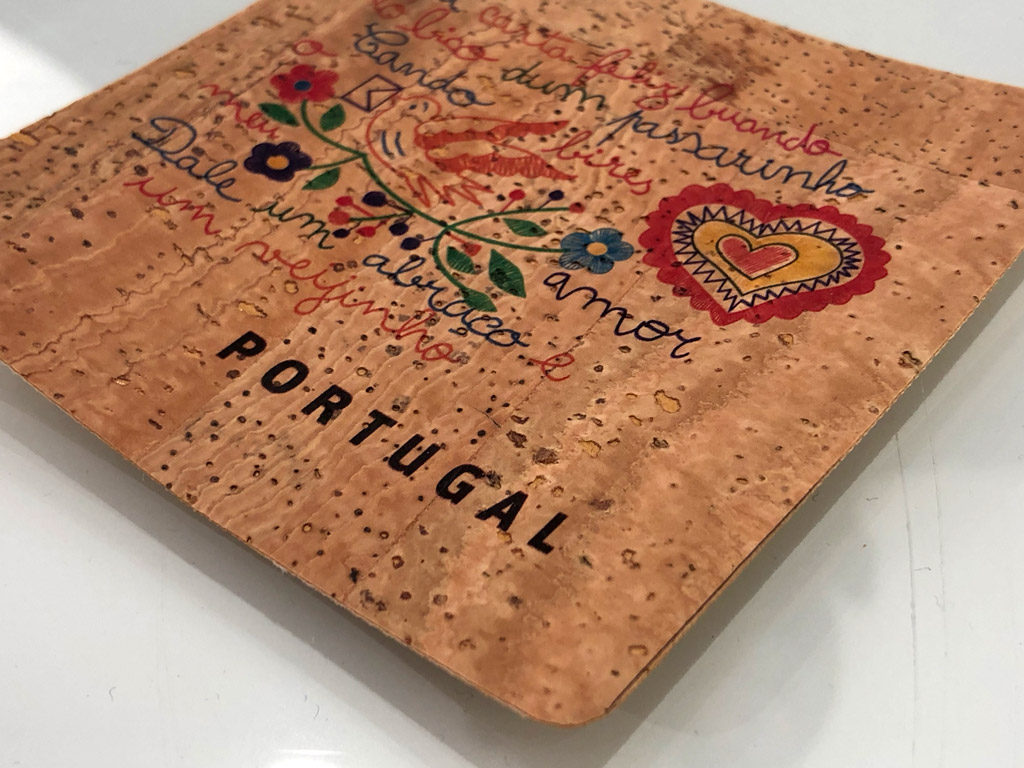
Front of the coaster with designs
Why is cork production so time consuming?
The cork plant grows very slowly and it takes years for a cork bark to mature. If you harvest too soon the cork will be poor quality.
How often can cork be harvested?
Carlos: A cork tree gets its first cork bark at the age of 25 years! The first cork extraction yields very poor quality cork. After the first extraction, the tree needs to grow for another 9 years before getting the first good cork yield. After the first yield, cork can be harvested every 9 years. The cork tree can live around 160 years so, during the life of a cork oak tree, it can yield about 15 good harvests.
Note: A street vendor of cork products said – 7 years to first cork harvest and every year thereafter. Clearly many vendors on the street had no clue about the production so take their word with a grain of salt.
How do cork plantations track harvest dates?
Carlos: If you go to a cork tree plantation, you’ll see that each tree has a large number painted on it. The number is the year of the last cork harvest from that tree. By looking that the number, the growers know when the tree is ready for the next harvest.
Cork harvesting takes a lot of skill and practice. The cork must be harvested to maximize the yield and size of the bark, while protecting the inner layers. If the inner layer is damaged, the tree may die or not produce any more cork. The cork trees in Portugal are protected and harvesting practices are regulated. As a result, Portuguese cork oak trees can live for 150-200 years and produce the best quality of cork.
How long does a cork oak tree live and yield cork?
Carlos: The cork tree lives for 160 years. So, each tree gives about 15 yields in its lifetime.
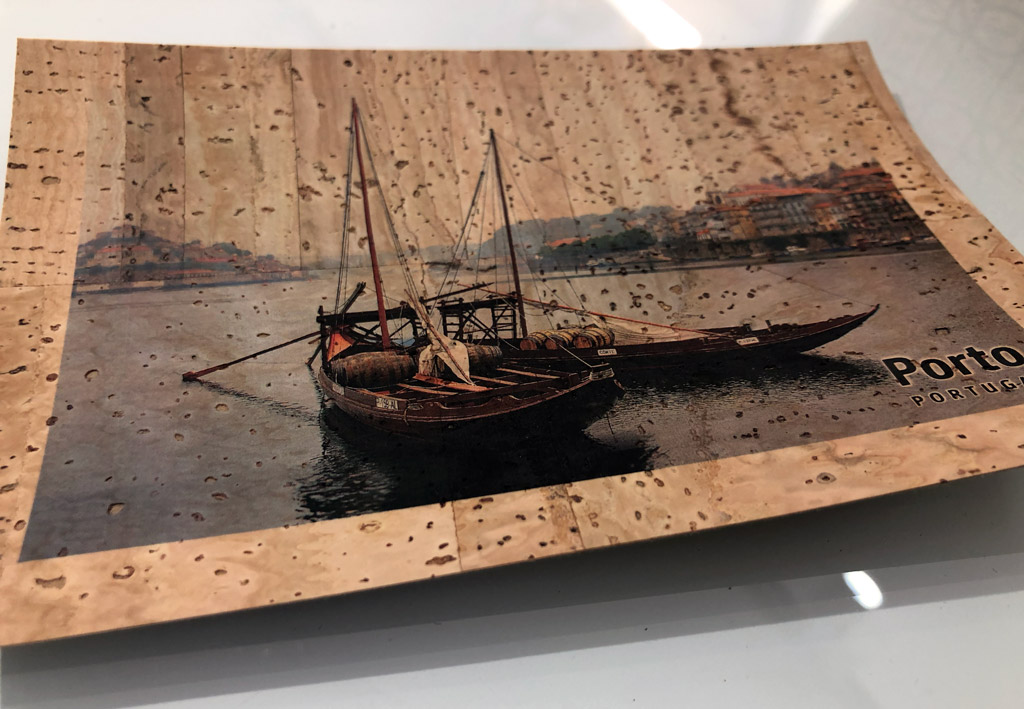
The long journey and lifecycle of cork
While the Cork Oak tree lives for 150-200 years, once separated from the tree, cork itself has a very long lifecycle.
- To start with, cork oak sapling is planted and cared for in large plantations.
- Once the plant is established, it must be maintained for 25 years.
- Cork is harvested carefully from the cork oak tree without damaging the tree itself. Every 9 years the bark will be ready for harvest.
- The harvested cork is processed for strength and durability.
- The manufacturers create cork products like wine bottle corks stopper, cork accessories, cork shoes, cork bags, cork flooring.
- Used wine bottle cork is recycled to make cheaper consumer cork products.
How long have you had this cork store in Porto?
Carlos: We started this store about 8 months ago. However, my father started the company in 2009. We buy raw cork from the plantations and process it to create the products. We have been selling cork products to companies, hotels, and retailers since 2009. Everyone likes our products so much that we started our own retail store in July 2018. The store has been doing great from the very beginning.
We visited Portugal and the cork store in Feb 2019. The store didn’t have a name in the front, just the bicycle. But, the wallet Carlos gifted me had the name and the website on an insert.
Do you grow your own cork?
Carlos: No, we can not grow cork. None of the cork manufacturers can grow their own cork trees. It is supplied by the cork plantation monopoly.
Where does cork come from? Who grows cork trees?
Carlos: All the cork trees and the land on which the trees grow is owned by one man, Americo Amorim and his company. It’s a complete monopoly. Americo Amorim died, in July 2017 after a long and successful career, expanding on his forefathers’ businesses. He had been grooming his daughter for 30 years. She now controls the world’s supply of cork.
Why are Lisbon shopping streets filled with cork products?
Carlos: 70% of the world’s cork comes from Portugal. Portuguese have built the process to create the best cork products. They are the quintennial Portuguese local souvenir. Cork is part of Portugal’s everyday life in many ways.
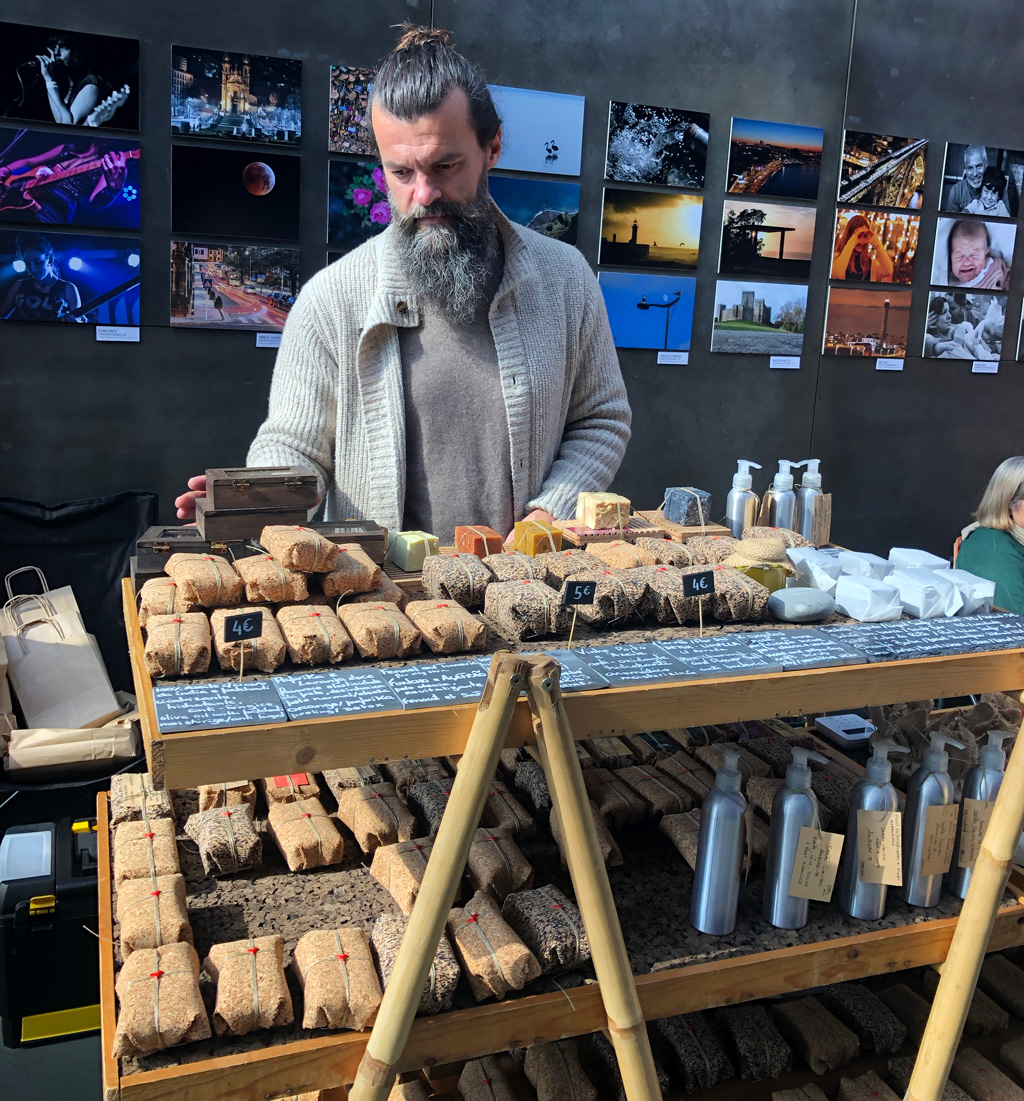
The Portuguese have perfected the process of growing, extraction, and conversion to fine durable cork products.
What’s the difference between real and fake cork products?
Carlos: It’s quite easy to tell the difference.
- A real cork product smells like a cork.
- Cork maintains its temperature but the imitation product become cooler or hotter depending on the surrounding temperature (most street vendor carts are in the sun so it would be easy to tell).
- If the price is too low it’s not real. Some vendors sell a small purse for €5. It costs more than that to just manufacture the material.
I had bought a purse in a Lisbon shopping street on R. Jardim do Tabaco, near Santa Apolónia railway station. After meeting Carlos, I wondered if I got street shopping cheated. When we returned to our apartment, we tested for all the three factors –
- The cork purse from the street smelled like a cork.
- I had paid €15 for it, so it was more than €5.
- We put the cork purse from the street vendor and the cork wallet from Carlos’s cork store in the sun for the whole day in the apartment window. At the end of the day, both products stayed at room temperature.
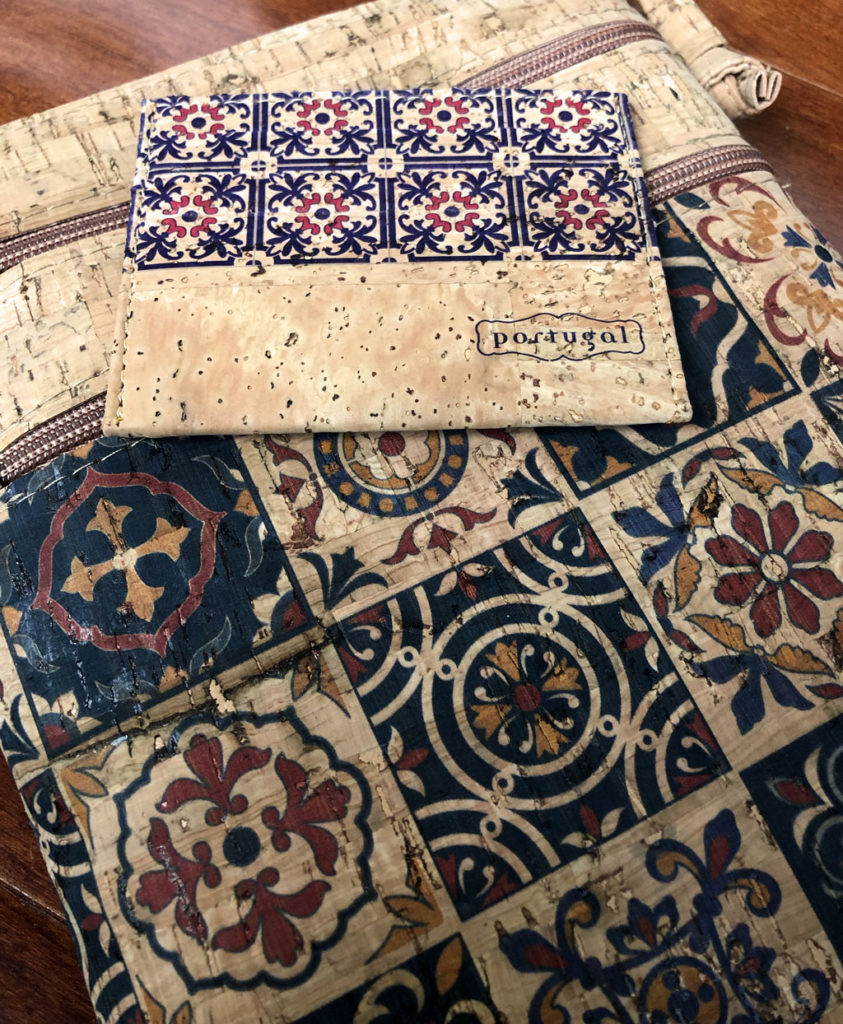
My conclusion is that both the purse and wallet are genuine Portuguese cork products. Do they look genuine to you?
Can you recycle wine bottle cork?
Most of the world’s cork production is used to make wine bottle cork, which is typically one-time use. Also, the wine bottle cork production leaves a lot of trimmings behind. I was curious to know what happens to the wine bottle cork and the trimmings after they are used?
Carlos: Many products like thick coasters and corkboard flooring, can be made from recycled wine bottle cork and trims. The cork is mashed, treated and pressed into new products. It is a natural and biodegradable product with amazing properties.
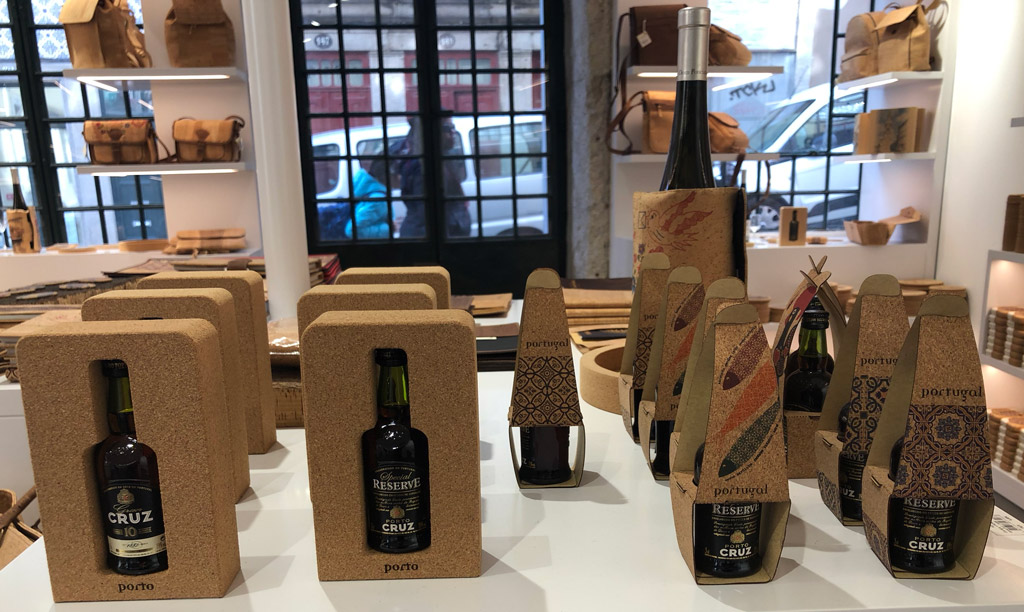
Wine bottle cork (and really any cork product) is fully biodegradable. However, these days many wine bottles have plastic closures that look like cork. Neither do they have the amazing quality of cork to protect the wine’s taste nor will they ever decompose. So, only put the real cork in the compost.
Is cork production eco-friendly? Is cork industry sustainable?
Cork production is generally considered eco-friendly. As we learned, cork trees live for over 150 years and they can grow in otherwise uninhabitable poor quality soil. With skilled cork harvesters, the trees are not damaged during harvest. Cork can be produced with little waste because much of it can be reused and recycled.
Cork the everlasting gift that keeps giving
We saw cork products everywhere in Porto and Lisbon street shopping and large stores. While cork oak trees grow all around the Mediterranean, North Africa, Spain, and Portugal, most of the world’s supply comes for Portugal. They thrive in the dry desolate regions where nothing grows. Cork trees withstand forest fires, protected by the same inner substance that makes wine bottle corks the best way to store wine.
The naturally occurring trees have been around for many millions of years through ice ages, fires, disease, and famine. The cork trees grow is very alkaline soil in some of the most barren and uninhabitable lands. They provide forestation where it’s not otherwise possible to grow. Cork is nature’s gift that keeps giving so much while taking so little.
Tile Art and Cork Designs in Portugal
On my first encounter with Lisbon street vendors selling beautiful and unique cork purses and cork totes, I was clueless about the material, its significance or its story. Initially, I thought it was leather (which I wouldn’t buy as a vegan). Back then, I had yet to see the beautiful tile art all over Porto and Lisbon and only during the trip did I learn the story and art of tile design in Portugal.
Seeing the two – modern cork products and traditional tile paintings side by side, the influence is clear. You can see traditional tile designs on cork products?
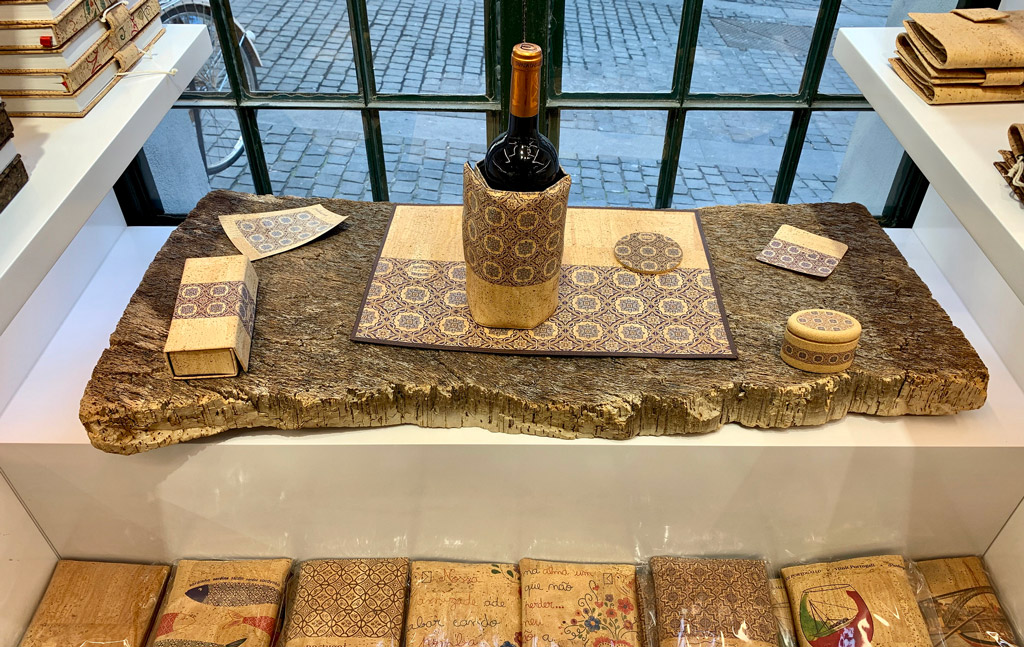
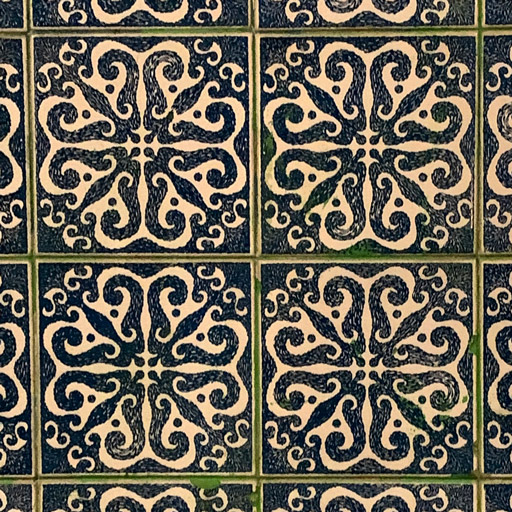
Dark blue with white tiles 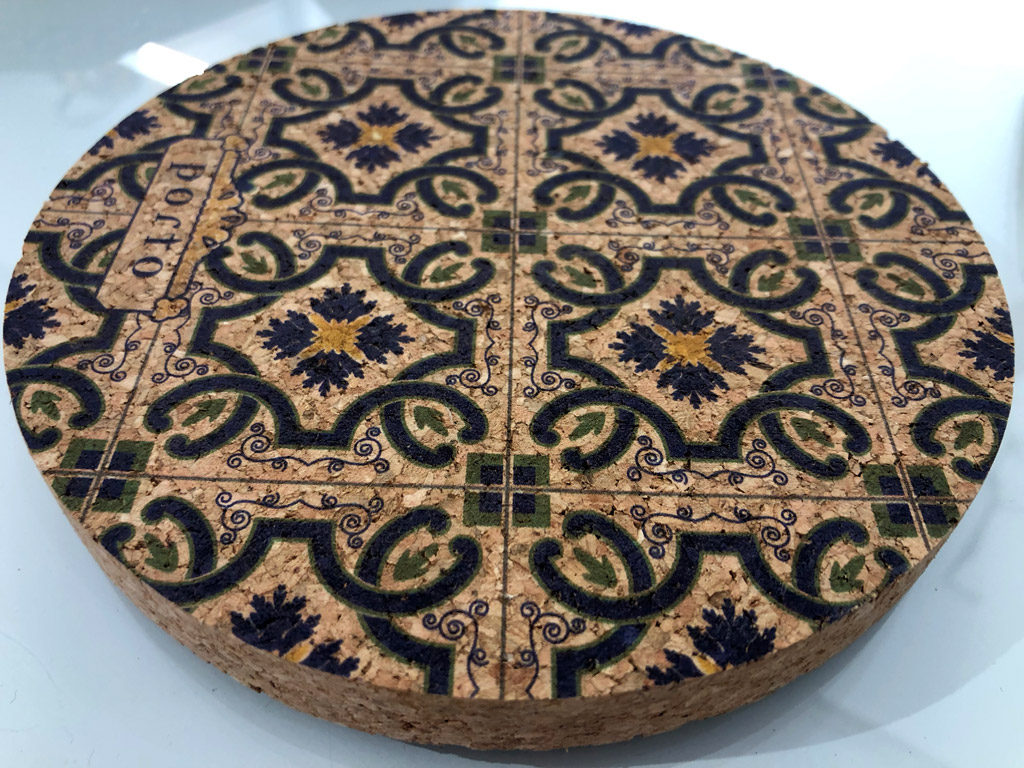
A beautiful cork coaster. 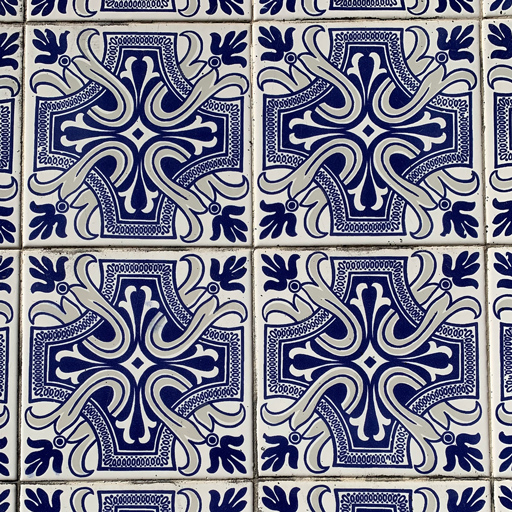
Blue tiles on a building
What to Buy in Portugal
With some research, I learned Portugal produces most of the cork and cork products, of the highest quality, in the world. Here is an excellent article on the Portuguese cork industry. It says that “Portugal produces about half the world output of commercial cork, and its exports over recent years have accounted for around 70 percent of world trade”. It goes on to provide statistics on cork production, area of the plantation, employment, and economics of the industry.
No wonder Portugal is famous for cork products. If you’re wondering what is Portugal famous for or what to buy in Portugal – definitely look into cork products of Portugal and beautiful tiles of Portugal. You’ll support the Portuguese economy, the arts, sustainability and get a high-quality product for a fraction of the price in the US.
Cork products are lightweight and durable and best found in Portugal. Small items make great Portuguese souvenirs. I’m usually looking for vegan alternatives to leather and cork purse, shoes, are absolutely vegan-friendly and suitable for Jains. Some Portugal cork products you can buys are –
- Fashion accessories like cork purses, tote bags, crossbody bags, wallets, hats, ties, jewelry, and cork footwear.
- Souvenirs like postcards, decorative articles, keychain, magnet.
- Housewares like wine bottle stoppers, gift boxes, gift wraps, cork fabric, candle holders, hot-pads, potholder, and coasters.
Related Articles
- More Portugal articles on Story at Every Corner
- Amorim’s, the world’s monopoly on cork
- A visual guide to cork manufacturing.
- CataVino’s stories about cork
- Cork industry in Portugal
- How stuff work


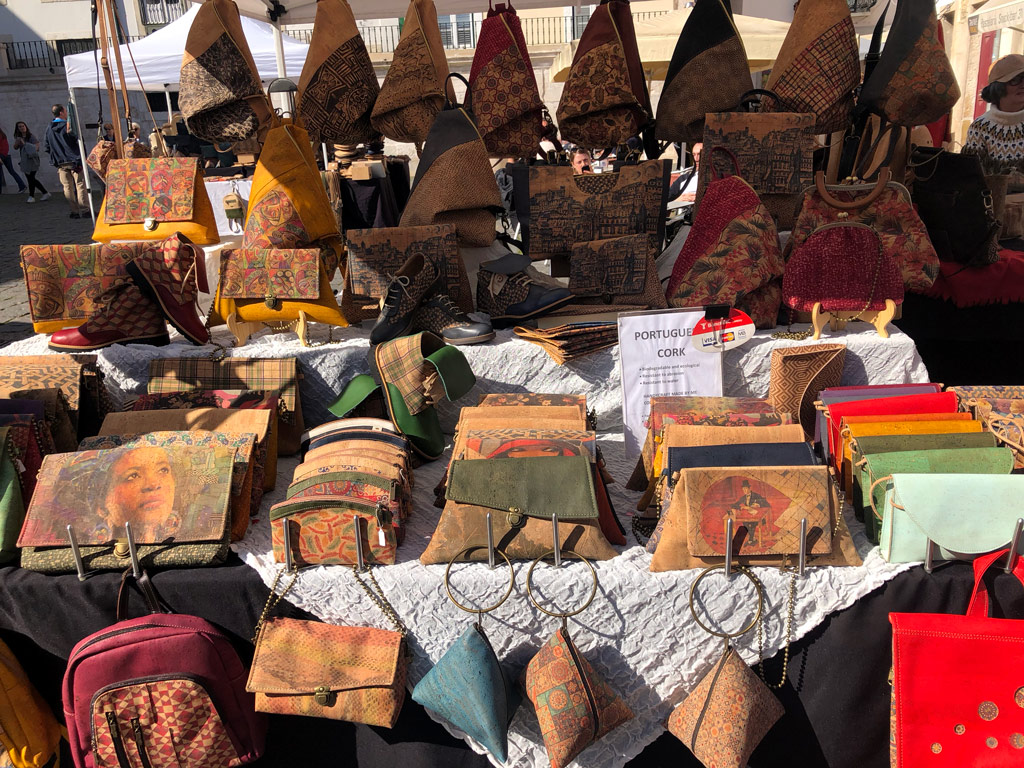
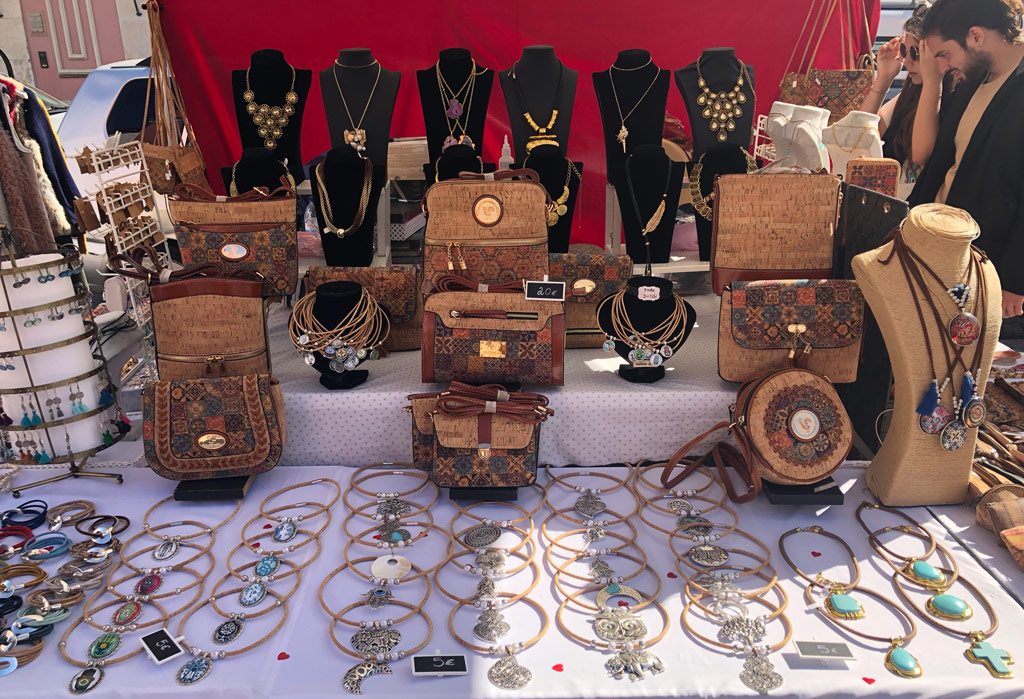
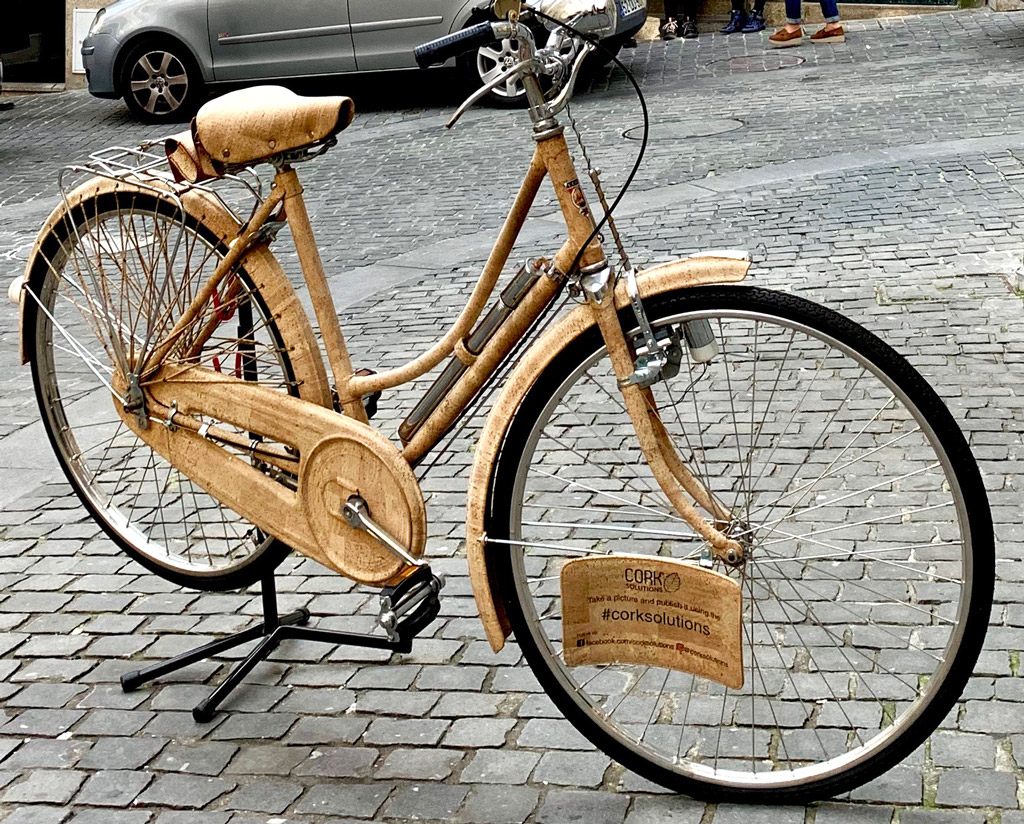
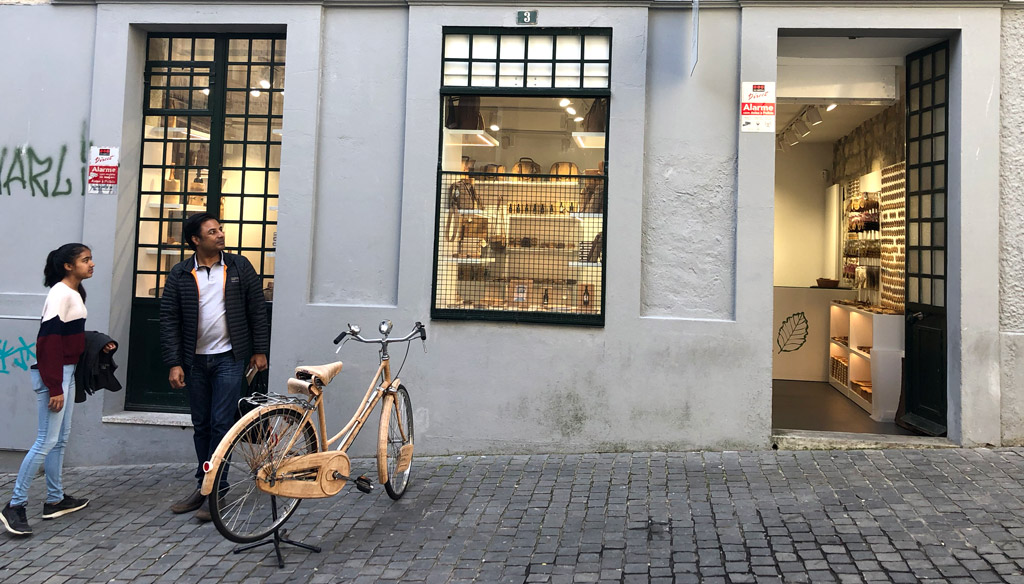
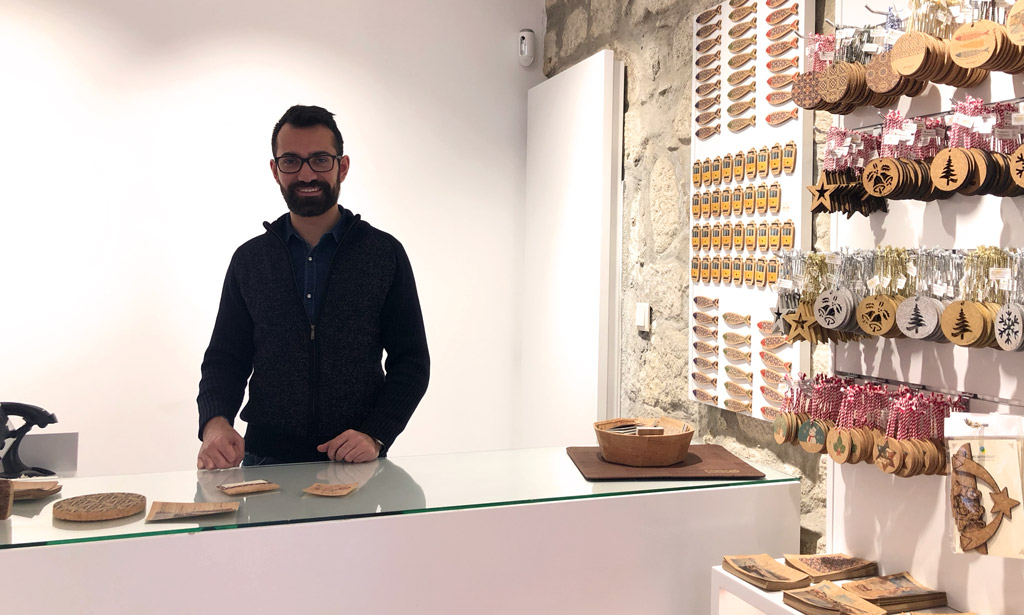
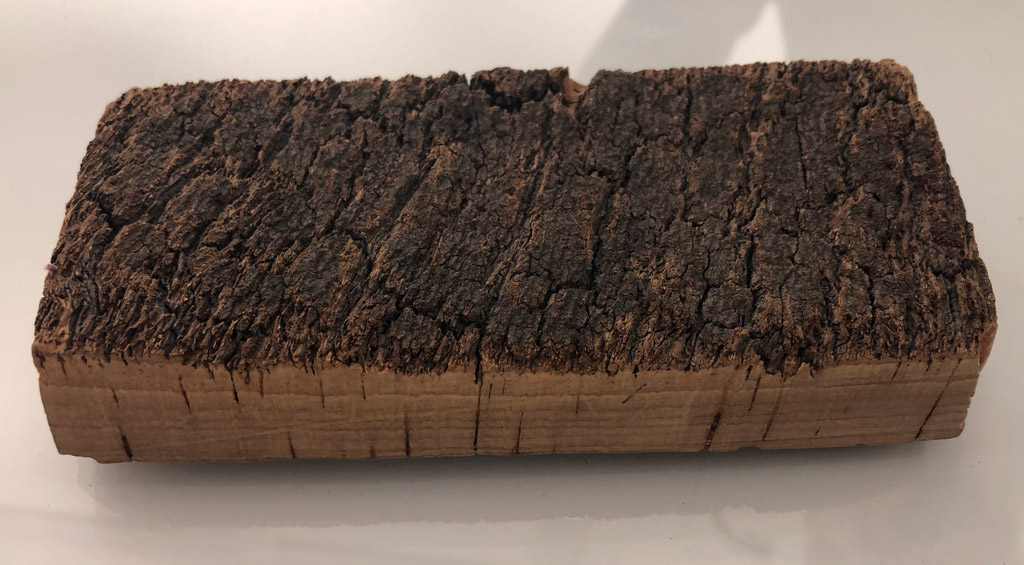
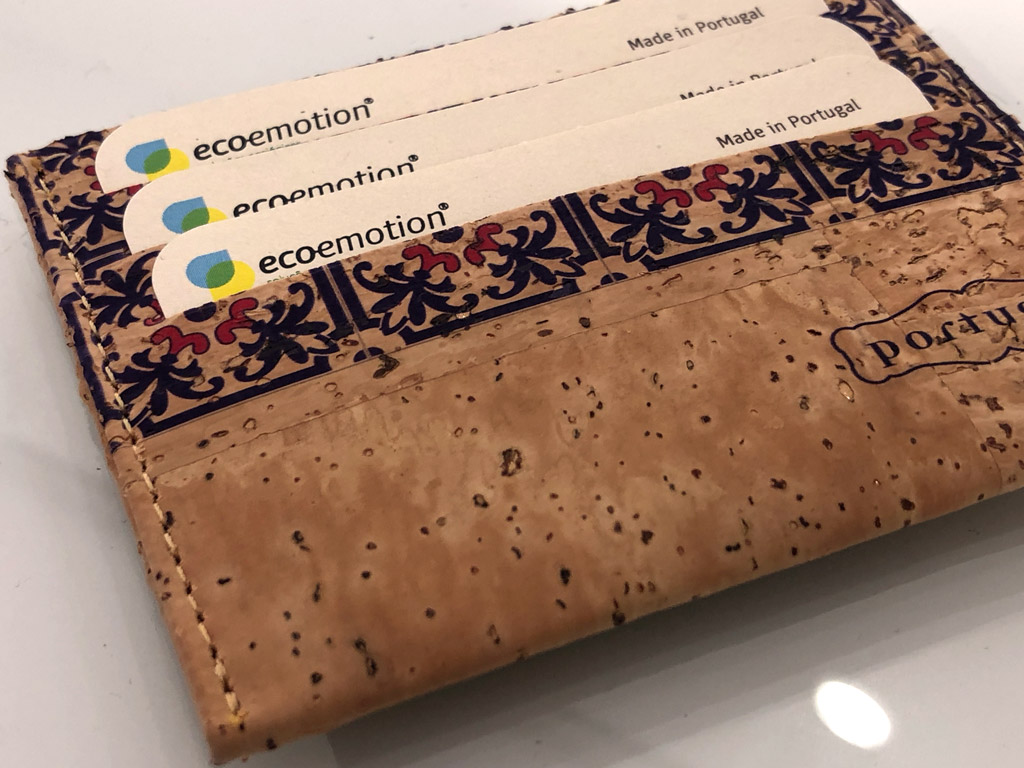
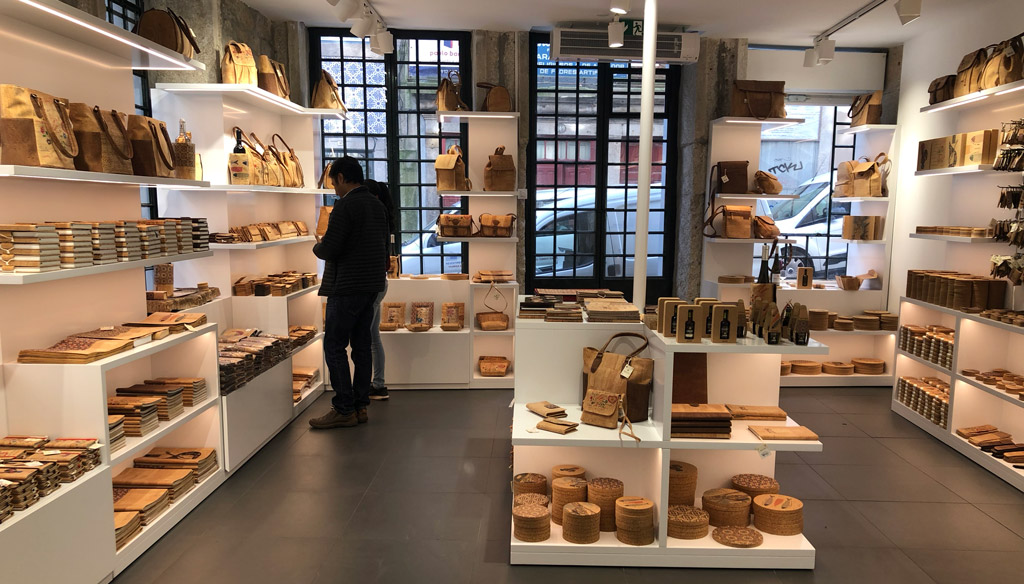
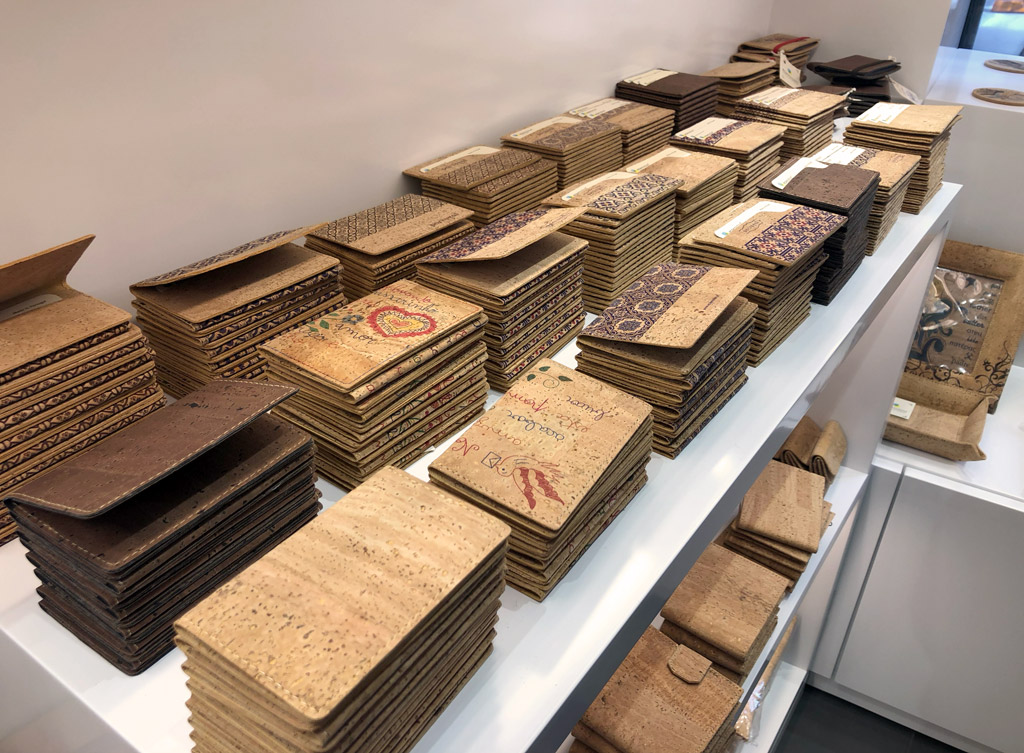
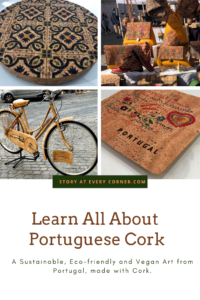
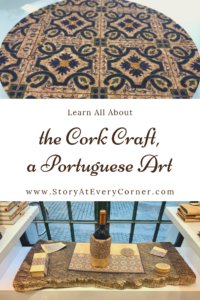
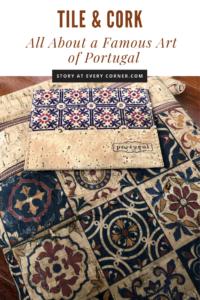
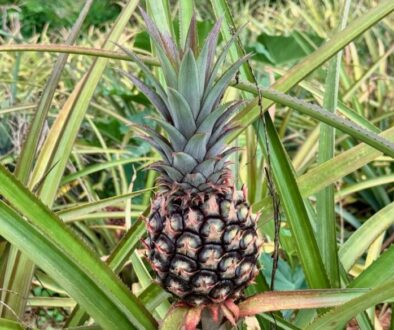



arv!
May 28, 2019 @ 7:34 am
I had no idea that cork products are so famous in Portugal among tourists. It was in your post, I read how cork is processed. Till now, I thought it must be derived from wood. These days liquor bottle caps which used to be made of cork have been replaced by plastic. Not many chances to see cork products!
Thanks for the lovely story on cork and Portugal, Jyoti
Véronique
May 30, 2019 @ 1:02 am
Hello,
A very complete and interesting article and I learned a lot of things about cork. I didn’t know that all cork oaks in Portugal are owned by only one company !
Jyoti
May 30, 2019 @ 6:48 am
Thanks Véronique! I didn’t know cork has such a fascinating story, so I had to share it. Who could thought it’s production is a monopoly. It was nice to learn what an amazing gift of nature it is – it grows with little natural resources providing tree cover to so much land, it is durable, versatile, renewable, eco-friendly and so much more.
Roxanne
May 31, 2019 @ 11:05 pm
I think the cork industry has probably got more inventive since losing a lot of wine cork sales to composites.
Jyoti
June 1, 2019 @ 6:21 am
Interesting thought. During my research learned that natural cork is in a resurgence in many markets, fueled by research & product development by Amorim. They’re saying wine bottle cork sales are growing because the product is better and keeps the flavor and freshness of wine better and longer.
Soumya Gayatri
June 1, 2019 @ 2:28 am
Thanks for these amazing details on cork and cork products. I was also under the impression that they would never last long. But look at them. So beautiful! And ageing even more beautifully. Loved that cork bicycle. Wonder how much effort must have gone into making it.
Jyoti
June 1, 2019 @ 6:16 am
You’re welcome Sowmya. It’s fascinating how much there is to tree bark when someone figured out how to convert it into versatile cork and cork products. I learned so much on the trip and thereafter. I wish I had asked about the bicycle and how it was made. I’ll reach out to Carlos about it.